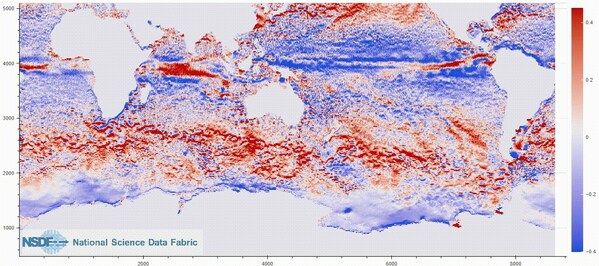Over 200TB of NASA Climate Data Accessible With Zero Fee
Through collaboration between Seal Storage Technology and University of Utah's Scientific Computing and Imaging Institute
This is a Press Release edited by StorageNewsletter.com on April 19, 2023 at 2:00 pmIn an effort to democratize data access, decentralized cloud storage provider Seal Storage Technology and the University of Utah’s Scientific Computing and Imaging Institute (SCI) announced that over 200TB of OpenViSUS IDX NASA atmospheric wind velocity and ocean current datasets are openly available to researchers globally.

The data will be accessible via a Jupyter notebook, which is a digital document that makes it easy to access and visualize data by combining text, code, and visualizations in a single medium. This project is part of SCI’s participation in The National Science Data Fabric (NSDF), a trans-disciplinary approach to integrated data delivery and access, democratizing data-driven scientific discovery through shared storage, networking, computing, and educational resources.
“The democratization of data is essential to scientific progress, and we are thrilled to partner with the University of Utah to make this possible,” said Seal Storage Technology COO Alex Altman. “Seal’s decentralized cloud storage platform ensures that this valuable data is accessible to researchers around the world, without barriers. We are excited to see the future discoveries and insights that will be made possible by making this important data available and by supporting the mission of NSDF.“
Researchers around the globe will be able to access the NASA OpenVisus data with zero egress fees as the data is stored on Seal’s decentralized cloud storage platform, which is powered by the Filecoin network. Egress fees are typically charged by centralized cloud storage providers when users want to move or access their data. In contrast, decentralized cloud storage leverages distributed ledger technology to store data at centers across the globe, offering a novel way to store data and remove egress fees. This global distribution ensures that the NASA data is immutable, verifiable, and has a chain of custody.
The data democratization partnership will provide researchers with new ways to access and utilize NASA’s climate data, including navigation via timestamps, fields, and other dimensions. This is made possible by transferring the data from NASA HPCs to Seal’s platform, which then enables the data to be accessed via a Jupyter notebook.
“The NSDF project is making significant progress towards more open access to critical cyberinfrastructure,” said Manish Parashar, director, Scientific Computing and Imaging (SCI) Institute. “Having shared data cyberinfrastructure at scale, such as what NSDF envisions, can accelerate scientific discovery across a broad range of disciplines. It can also broaden access to the data by new groups of researchers.“
This dataset is an output of a simulation that combines 2 models to provide high-resolution data on atmospheric and oceanic variables. The first model is a C1440 configuration of Goddard Earth Observing System (GEOS) atmospheric model, whereas the second model is a LLC2160 configuration of the MITgcm model. There are over 10,000 timesteps in each output, and each of them has multiple scalar fields such as temperature, snow thickness, east-west velocity, etc. With the help of Jupyter notebooks, researchers are able to navigate across all timesteps and dimensions of certain fields (e.g. East-west velocity ‘U’) of both the atmospheric dataset and LLC2160 ocean dataset.
“This is a major milestone of the National Science Data Fabric (NSDF) that gives all scientists, engineers, and regular citizens direct access to massive data of major societal importance without needing expensive hardware resources,” said Valerio Pascucci, NSDF principal investigator, professor at Kahlert School of Computing, and director of the Center for Extreme Data Management and Visualization (CEDMAV) at the University of Utah. “This partnership between academia and industry shows how anyone with a laptop and an Internet connection can now visualize and analyze data that until now has been the sole monopoly of a selected few with the special access and training needed to use some of the largest HPCs in the world.“
Researchers can access the NASA data on the web dashboard or visualize the data locally by downloading the Jupyter notebook. The current 200TB of data constitutes the first installation of this multi-petabyte project demonstrating the feasibility of the NSDF-SEAL data democratization initiative.













 Subscribe to our free daily newsletter
Subscribe to our free daily newsletter


